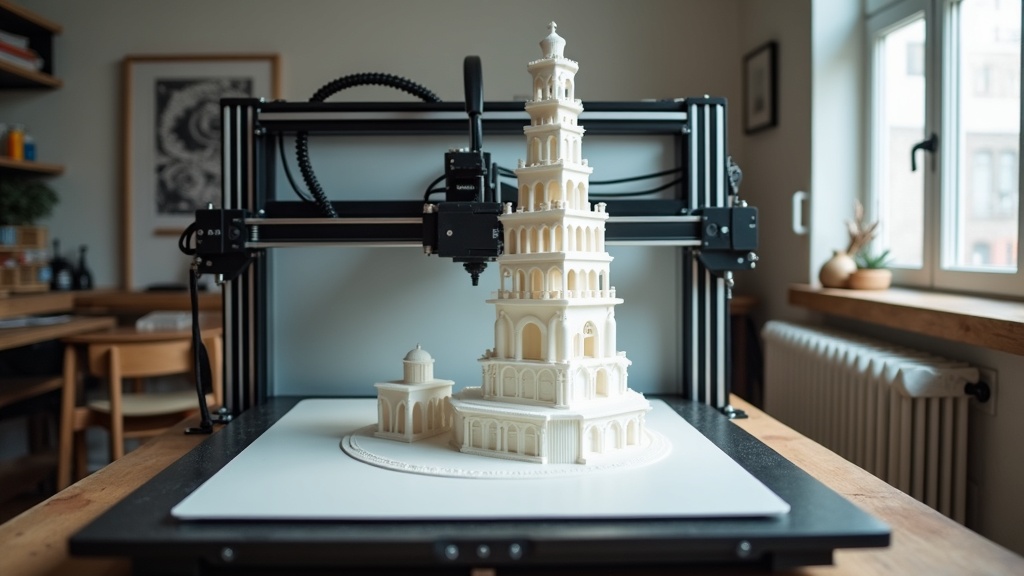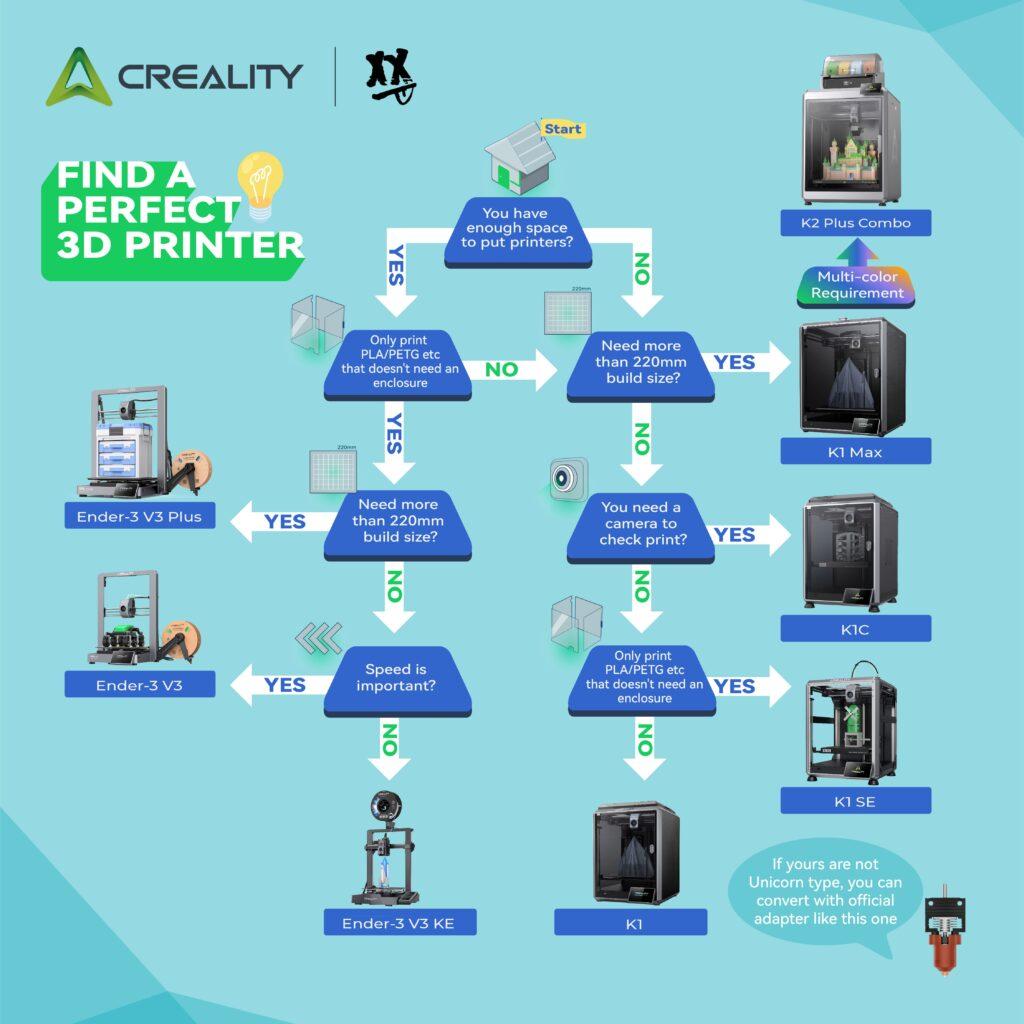Large-format 3D printers are unlocking new ways for people at home and in small studios to build bigger, more ambitious projects. As someone who enjoys practical design and creativity, I’ve noticed how these printers can turn piles of plastic filament into large-scale models, sculpture prototypes, furniture pieces, and even functional tools.
Home tinkerers, hobbyists, artists, and others interested in design now have a realistic path to creating full-size objects without renting commercial shop space. In this article, I’ll share what to know about owning and using large format 3D printers—including how they work, their advantages, common challenges, and some handy tips to make the most out of a big machine in a smaller space.

What are Large Format 3D Printers?
When people talk about large-format 3D printers, they’re referring to machines with a much larger build volume than typical consumer models. Most standard 3D printers on the market can print objects up to around 200 to 300mm on each axis. Large-format printers can sometimes produce items exceeding 500mm and, in some cases, up to a meter or more.
This boosted capacity means I can print a life-sized helmet in one go, piece together custom furniture parts, or craft big cosplay props that really get noticed at a convention. These printers use familiar techniques like fused deposition modeling (FDM), where plastic filament is melted and layered to build up an object. The main difference is scale, and with that come different benefits as well as some hurdles along the way.
Why Choose a Large Format 3D Printer for Home or Studio?
The appeal of these bigger machines goes far beyond bragging rights. Here are some of the main advantages I’ve found:
- Single Part Objects: Large printers allow fabrication of big objects in one seamless print, reducing the need for gluing or assembling smaller segments.
- Ambitious Prototyping: Artists and designers can make installations, signs, displays, or furniture that match their vision closely in size and detail.
- Cost and Convenience: Outsourcing large 3D prints can get expensive. Having my own machine cuts those costs over time and reduces project turnaround times.
- Expanded Possibilities: Beyond art, large printing opens doors for building robotics frames, custom organizers, engineering prototypes, and sculptural work, right from home.
These benefits make large-format 3D printers a smart option for people who want flexibility and more creative control over their work. The possibilities often surprise people when they first check out what these printers can actually produce at home.
What Makes a Printer “Large Format?”
To better understand what sets these printers apart, here’s a quick breakdown of important specs and features I watch for:
- Build Volume: This is the maximum size the printer can handle. It’s usually listed in millimeters (for example, 400 x 400 x 500 mm). The larger the volume, the bigger the possible print, but it also means more desk or floor space is needed.
- Frame and Mechanics: Large-format models have heavier and more stable frames to keep the printer from wobbling or losing accuracy over long build times.
- Heated Beds: A firm, heated bed is really important. It keeps large prints attached to the surface and helps reduce warping at the edges.
- Dual or Direct Drive Extruders: Some models come with multiple extruders or direct drive setups, which can offer more filament choices and make feeding material into the nozzle smoother.
Build quality in this group of printers tends to be higher because moving heavy parts smoothly and precisely is more demanding than on smaller printers. Along with unique features, I also look out for reviews from users who have tested the same machines for long-term reliability and consistency.
Getting Started with a Large Format 3D Printer
Switching from a standard desktop 3D printer to a large-format machine isn’t just about bigger prints. I found there are some new things to get used to, especially during setup and initial calibration.
- Leveling the Bed: With a much larger printing surface, proper bed leveling is even more important. Automatic bed leveling features really help, but manual checks are still part of the process.
- Upgraded Power Requirements: Large printers may need their own dedicated power circuit, especially if the heated bed is substantial.
- Material Consumption: Big prints use lots of filament. It’s helpful to keep an extra spool or two ready so projects don’t come to a sudden stop in the middle of a print.
- Print Time: Large, detailed projects take much longer, sometimes days instead of hours. Patience and planning ahead help avoid frustration.
Most models arrive semi-assembled, and getting things dialed in for the first time can take a few hours. I found it’s a good idea to test print smaller objects before committing to a multi-day print job. Also, checking for the most up-to-date firmware and manufacturer setup guides can save a lot of time troubleshooting.
Big Benefits: Real Projects I’ve Made
The best part about a large-format 3D printer is seeing ideas turn into functional or artistic objects right in my living room or studio. Some things I’ve made include:
- Outdoor signs and displays for local businesses that stand nearly a meter tall in one piece. These really help my clients get noticed from far away.
- Custom-fit storage boxes for organizing tools and parts in my workshop without any need for glue or screws.
- Wearable costumes for events, including helmets and armor, all built for real-size adults in just two or three assembled pieces.
- Furniture components like table legs and lamp shades that would be impossible on a smaller printer.
Sharing these prints on social media connects me with other makers. It’s clear that people with small business ideas, Etsy shops, or art studios benefit from making big objects without turning to outside vendors or factories. Each large project builds confidence and encourages new ideas, turning my studio into a place where eye-catching results come to life.
Challenges to Watch Out For
Owning a large-format 3D printer is rewarding, but there are some challenges I’ve run into that are worth knowing before making the investment:
- Print Failures Hurt More: If a print goes wrong after 30 hours, it means wasted filament and time. Backup power supplies (like uninterruptible power sources) and fail-safe resume functions are really handy to prevent losing work to things like power surges or accidental shutdowns.
- Space and Noise: Bigger machines need a stable table or even a dedicated spot on the floor. They are usually louder and can run hot, so considering placement near ventilation or away from bedrooms is wise.
- Bed Adhesion and Warping: The larger the print, the harder it is to prevent the edges from lifting or curling. Prepping the print bed well and using adhesives or textured surfaces helps manage this.
- Higher Upfront Cost: Large format printers generally cost more than entry-level desktop models, both in the machine itself and in the larger supplies needed.
I found that with planning and some research, these issues become far less daunting, and it’s easy to fit such a printer into my workflow. Checking for firmware updates, reading other users’ experiences, and prepping the workspace are all steps I recommend before starting a big project.
Print Quality and Surface Finish
Big prints show imperfections more, so fine-tuning printer settings is especially helpful. Lower layer heights and slower print speeds improve surface finish but increase print times. I like to experiment with different filament brands and nozzle sizes before tackling display pieces to strike a good balance between speed and quality. Sanding and painting afterwards bring even the largest models up to a next-level, cool finish when they need to look great for events or clients.
Learning Software and Slicing
Larger printers demand more from slicing software. Models sometimes need to be split or hollowed to save material and print time. Programs like Ultimaker Cura, PrusaSlicer, and Simplify3D have features that support custom supports and let you preview multi-hour print jobs, so there are fewer surprises partway through printing. I’ve picked up tricks like orienting the model in different ways to reduce print times or using lightweight infill patterns to keep prints sturdy while minimizing wasted filament.
Smart Tips for Home and Studio Users
Using a large-format 3D printer in a home or small studio can be smooth with these habits:
- Keep your spare parts organized, especially nozzles, belts, and cleaning tools.
- Use build plate adhesives or removable spring steel sheets to make big prints easier to remove.
- Check on prints periodically instead of leaving them fully unattended for days at a time.
- Keep extra rolls of filament in airtight storage so moisture doesn’t ruin them.
- Start with test prints to dial in calibration with each new type of filament or after a move.
These small steps pay off in fewer spoiled prints and much more reliable results. Over time, you will see your workflow get smoother and projects turn out better with each try.

Frequently Asked Questions
Here are some things people often ask me when considering a big 3D printer for home or studio use:
Question: How much space will I need for a large-format 3D printer?
Answer: Many large-format printers need at least a sturdy workbench, though some floor-standing units take up one to two square meters. I always make space for the machine, filament spools, cleaning tools, and clearance for moving parts.
Question: Can I use regular PLA, or do I need special filament?
Answer: Most of these printers handle standard filament types like PLA, PETG, and ABS. Some models support specialty filaments, including wood or carbon fiber blends, for extra durability or unique effects.
Question: Is it difficult for a beginner to operate a large-format printer?
Answer: These printers can look intimidating, but if you already know how to 3D print on a smaller scale, the main differences are setup time and patience. Manufacturers often provide user guides and community forums to help with troubleshooting and setup tips.
Should I Invest in a Large Format 3D Printer?
If you’ve reached the limits of what a desktop printer can do or want to tackle bigger creative challenges for personal or business projects, a large-format machine is worth looking into. The learning curve does exist, but with solid research and some practical testing, it opens up a multitude of new options for creating things at home, whether for personal use or for clients.
I enjoy having a tool that lets me design and build on a bigger scale, and it’s exciting to see what other makers are coming up with as these printers become more affordable and accessible. Big 3D printers have taken my creativity and project capabilities up a notch. If you’re searching for a way to make next-level cool projects at home, this is one tool that might open up a whole new adventure for you, too.

